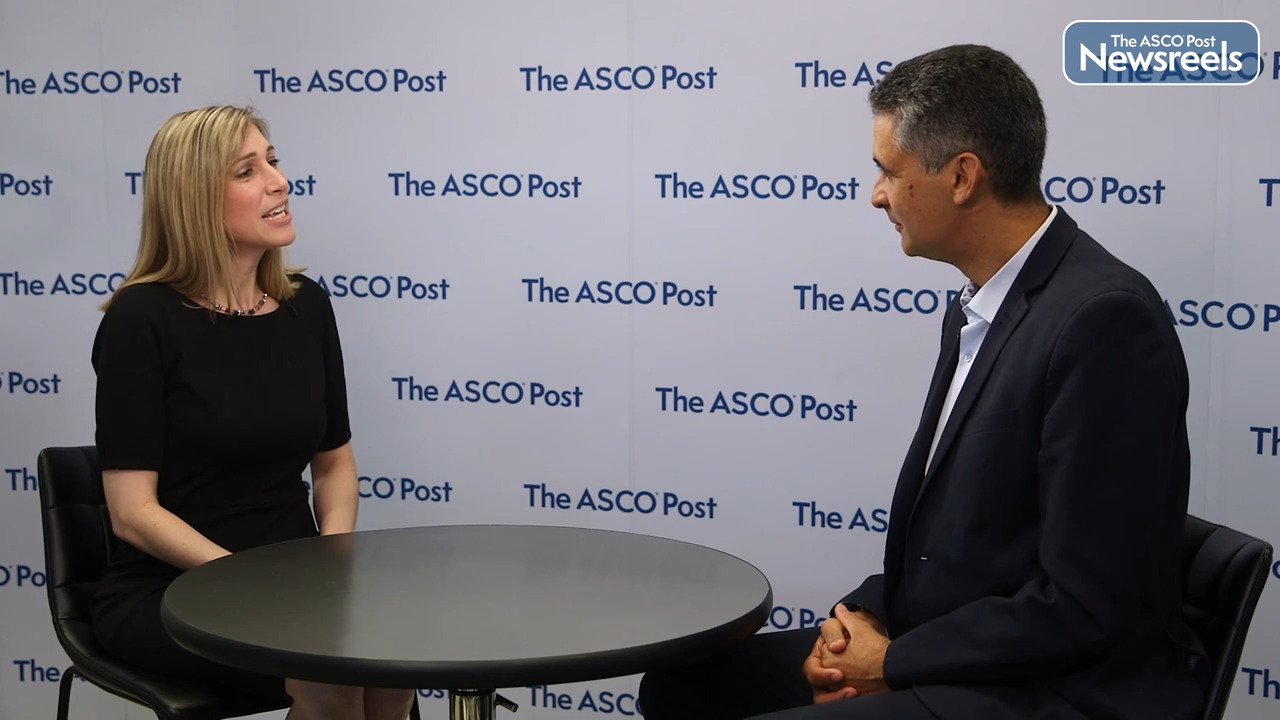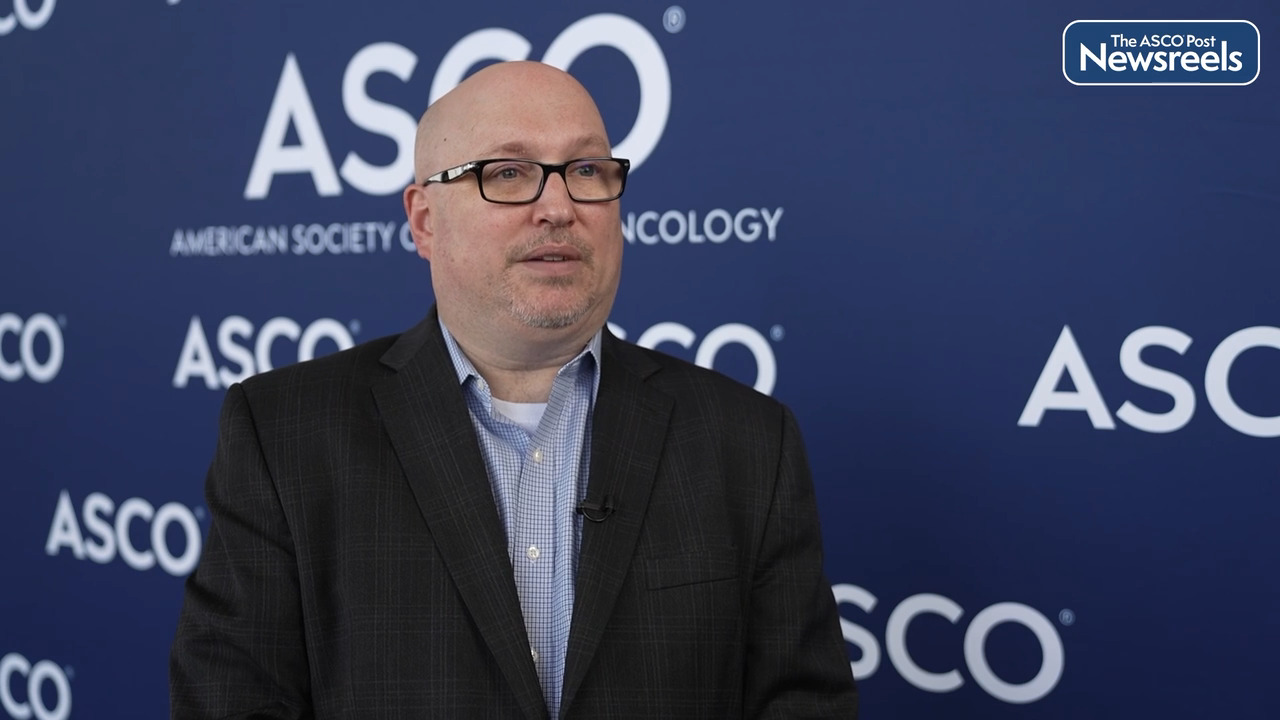Catherine C. Coombs, MD, on B-Cell Malignancies and Long-Term Safety of Pirtobrutinib
2023 ASCO Annual Meeting
Catherine C. Coombs, MD, of the University of California, Irvine, discusses prolonged pirtobrutinib therapy, which continues to demonstrate a safety profile amenable to long-term administration at the recommended dose without evidence of new or worsening toxicity signals. The safety and tolerability observed in patients on therapy for 12 months or more were similar to previously published safety analyses of all patients enrolled, regardless of follow-up (Abstract 7513).
Transcript
Disclaimer: This video transcript has not been proofread or edited and may contain errors.
Catherine C. Coombs:
BTK has proven to be an invaluable target of inhibition for the treatment of a number of B-cell malignancies. However, the use of BTK inhibitors is dependent upon their continuous administration. Therefore, safety and tolerability are paramount importance to maintain maximal efficacy. In this abstract, we reviewed the long-term safety data of Pirtobrutinib from the Phase 1/2 BRUIN trial. The trial design enrolled patients with a number of B-cell malignancies. The entire safety population was over 700 patients. However, in this post-hoc analysis, we reviewed the patients on treatment for over a year, which amounted to 326 patients. As one would expect, this population was enriched for patients with the more chronic B-cell malignancies, and so the largest population was CLL and SLL though there were about 40 patients with mantle cell lymphoma and Waldenström's macroglobulinemia. The safety aspects that were reviewed included all of the common side effects from this drug, which fortunately were very uncommon, especially grade three or higher AEs.
In reviewing treatment exposure adjusted AE rates, what we determined was that in comparing patients on the drug for over a year compared to the entire safety population, there does not appear to be an increased risk in toxicity for patients that are on the drug for longer periods of time. This is further supported by the low incidences of discontinuation for the drug, especially in those patients who were on the drug for over a year where only 1.2% of patients discontinued due to side effects. In addition, regarding the class effects of BTK inhibitors that we worry about, the incidences of atrial fibrillation, bleeding, and hypertension were all extremely low and did not suggest a temporal relationship to Pirtobrutinib. In conclusion, we can see that now with long-term administration of Pirtobrutinib, this drug is exquisitely safe and can inhibit its target, BTK, for maximal benefit to our patients with these malignancies.
Related Videos
The ASCO Post Staff
Cathy Eng, MD, of Vanderbilt-Ingram Cancer Center, and Lars Henrik Jensen, MD, PhD, of the Danish Colorectal Cancer Center South and the University Hospital of Southern Denmark, discuss phase III results from the Scandinavian NeoCol trial, which showed that neoadjuvant chemotherapy is not superior to standard upfront surgery in terms of disease-free and overall survival in patients with colon cancer, although there are certain circumstances when this approach may have more favorable outcomes (Abstract LBA3503).
The ASCO Post Staff
Georgina V. Long, MD, PhD, of Melanoma Institute Australia and The University of Sydney, discusses new data showing that patients with resected stage IIB/C melanoma who were treated with adjuvant nivolumab had prolonged recurrence-free survival compared with placebo across all biomarker subgroups. The baseline biomarkers most predictive of prolonged recurrence-free survival with nivolumab were high interferon gamma score, high tumor mutational burden, CD8 T-cell infiltration, and low C-reactive protein (Abstract 9504).
The ASCO Post Staff
Alicia K. Morgans, MD, MPH, of Dana-Farber Cancer Institute, and Karim Fizazi, MD, of Institut Gustave Roussy, University of Paris-Saclay, discuss findings from the TALAPRO-2 study, which showed that talazoparib plus enzalutamide improved radiographic progression–free survival over standard-of-care enzalutamide as first-line treatment for patients with metastatic castration-resistant prostate cancer and HRR gene alterations. This regimen also delayed the time to deterioration in global health status and quality of life (Abstract 5004).
The ASCO Post Staff
Thomas E. Hutson, DO, PharmD, of Texas Oncology, discusses the 4-year follow-up results from the CLEAR study for patients with advanced renal cell carcinoma (RCC). The data showed that lenvatinib plus pembrolizumab continues to demonstrate clinically meaningful benefit vs sunitinib in overall and progression-free survival, as well as in overall and complete response rates, in first-line treatment (Abstract 4502).
The ASCO Post Staff
Smitha Krishnamurthi, MD, of the Cleveland Clinic, and Deb Schrag, MD, MPH, of Memorial Sloan Kettering Cancer Center, discuss phase III findings from the PROSPECT trial, which showed FOLFOX chemotherapy with selective use of radiation therapy and sensitizing fluoropyrimidine (5FUCRT) is noninferior to 5FUCRT for the neoadjuvant treatment of patients with locally advanced rectal cancer, prior to low anterior resection with total mesorectal excision (Abstract LBA2).





